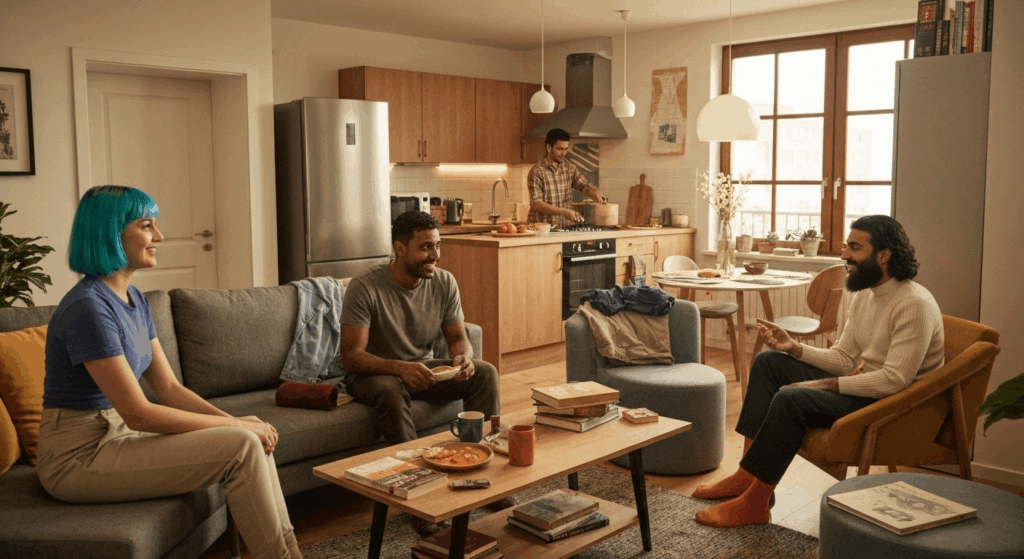
Key Highlights
- Supported Independent Living (SIL) provides assistance with daily tasks to help you live more independently.
- Your eligibility for SIL is assessed based on your individual support needs, not just your diagnosis.
- SIL is not just for group homes; support can be provided in your own home or a shared living arrangement.
- A good SIL provider offers personalised care, helps with community access, and prioritises your health and wellbeing.
- Finding the right SIL provider is a key step in using your NDIS plan to achieve greater independence.
Introduction
Achieving independent living is a significant goal for many people, and having the right support can make all the difference. Supported Independent Living (SIL) is a type of support designed to help you live with more freedom and control over your daily life. Whether you need assistance in your own home or in a disability accommodation setting, understanding your options is the first step. This guide will walk you through how to find a provider that truly understands your support needs and helps you live life on your terms.
Key Steps to Finding the Right Provider for Supported Independent Living Services
Finding the perfect Supported Independent Living (SIL) provider can feel like a big task, but breaking it down into manageable steps makes the process much clearer. It’s about understanding what you need and knowing what to look for in a service provider. For NDIS participants, making an informed choice is crucial for a successful and supportive living arrangement.
This journey involves understanding how SIL works, confirming your eligibility, and exploring the different housing and support models available. By comparing providers and asking the right questions, you can find a partner who will help you achieve your independent living goals.

1. Understanding Supported Independent Living and How It Works
Supported Independent Living, often called SIL, is a specific type of support funded by the National Disability Insurance Scheme (NDIS). At its core, SIL provides help and supervision with everyday tasks to help you live as independently as possible. It is designed for people who need regular assistance at home to live safely and comfortably while building their skills.
Your NDIS plan will outline whether SIL is considered a reasonable and necessary support for your situation. It’s important to remember that SIL funding covers the support services you receive, not the cost of the housing itself. This support is tailored to your unique support needs, focusing on helping you with daily life.
SIL can include assistance with a variety of tasks, such as:
- Personal care activities like showering and dressing.
- Household tasks, including cooking meals and cleaning.
- Managing your budget and daily schedule.
- Developing new skills for greater independence.
2. Identifying Your Eligibility for Supported Independent Living Services
Not every NDIS participant is automatically eligible for Supported Independent Living services. SIL is specifically for individuals who require a significant level of help at home. The National Disability Insurance Agency (NDIA) will assess your situation to determine if this type of support is right for you. They will look at how your condition impacts your ability to manage daily activities.
To be considered for SIL, you generally need to demonstrate a few key things. Your NDIS planner or Local Area Coordinator (LAC) will review medical reports and functional assessments to understand your daily support requirements. The goal is to see if informal supports, like help from family, are sufficient or if you need more structured assistance.
Eligibility often depends on whether you:
- Need regular support during the day and possibly overnight.
- Have complex support needs that affect your ability to live on your own.
- Require assistance with personal care or essential daily living activities.
3. Exploring Different Housing Options in Supported Independent Living
A common misconception is that SIL is only available in group homes. In reality, you have several choices when it comes to your living arrangements. SIL supports can be delivered in your own home, a shared home with a few other people, or in specialist disability accommodation (SDA) if you have very high support needs. The best option depends on your personal preferences, goals, and the level of support you require.
Choosing where you live is a major decision, and it’s important to find a setting that feels right for you. Some people prefer the privacy of their own home, while others enjoy the social aspect of shared living. Exploring these different independent living homes allows you to find a balance between independence and support.
Here is a quick look at some common housing options:
| Housing Option | Description |
| Shared Home / Group Home | You live with one or more other NDIS participants, sharing communal spaces and support staff. |
| Own Home | You live in your own house or apartment, and support workers visit to assist as needed. |
| Specialist Disability Accommodation (SDA) | Purpose-built housing for people with extreme functional impairment or very high support needs. |
4. Comparing Available Providers in Your Region
Once you have an idea of your needs and preferred living situation, the next step is to find and compare SIL providers. Your NDIS planner, support coordinator, or Local Area Coordinator can be a great resource for finding a service provider in your area. They can give you a list of organisations that offer the type of support you’re looking for.
When you start comparing providers, don’t just look at what they offer—consider how they offer it. Do their values align with yours? Do their support workers seem friendly and experienced? It’s important to choose a provider that respects your choices and is committed to helping you achieve your goals. For NDIS participants, this partnership is key to a positive experience.
When evaluating a potential SIL provider, consider asking about:
- Their experience with your specific disability or support needs.
- The training and qualifications of their support workers.
- How they create and review personalised support plans.
- Their process for handling feedback or complaints.
Essential Supports Offered by Supported Independent Living Providers
A quality SIL provider offers more than just help with basic chores. They deliver a comprehensive range of support services designed to enhance your independence, wellbeing, and connection to the community. These supports are flexible and built around your personal goals and daily activities.
From assistance with personal care to creating opportunities for social engagement, SIL support is all about enabling you to live a full and meaningful life. The following sections explore the key areas of support you can expect from a provider.
Personalised Care and Daily Living Assistance
One of the cornerstones of SIL is personalised care and daily living assistance. This support is tailored specifically to you, ensuring you get the right help when you need it. Support workers can assist with a wide range of daily tasks, helping you maintain your home and personal routines. This enables you to focus on the things that are most important to you.
The goal of this assistance is to empower you, not to take over. Support workers are trained to help you build your own skills, so you can become more confident in managing your daily life independently. Whether it’s learning to cook a new meal or creating a weekly budget, the support is designed to grow with you.
This type of support can include:
- Assistance with personal care routines like bathing and dressing.
- Help with meal planning, preparation, and cooking.
- Support for household chores such as cleaning and laundry.
- Help with shopping and other essential errands.
Community Inclusion and Social Participation
Supported Independent Living is also about helping you connect with the world outside your front door. A good provider will work with you to ensure you have opportunities for community access and social interaction. This support is vital for building relationships, pursuing hobbies, and feeling like a valued member of your community.
Based on your individual support needs and interests, your provider can help you find and participate in local activities. This could be anything from joining a sports team to attending a class or volunteering. The aim is to break down barriers that might prevent you from engaging in social life and help you build confidence in new environments.
Support for community inclusion can involve:
- Assistance with transport to and from social events.
- Help finding local groups or clubs that match your interests.
- Support to build social skills and form new friendships.
Health, Safety, and Wellbeing Support
Your health, safety, and overall wellbeing are top priorities in any SIL arrangement. Providers have a responsibility to create a safe and supportive living environment. This includes everything from ensuring your home is secure to helping you manage your physical and mental health. They act as a key partner in your overall care.
Providers can coordinate with other health professionals, such as doctors or therapists, to ensure your health needs are met. They can also provide support with medication management and help you attend appointments. This integrated approach ensures that all aspects of your wellbeing are looked after, giving you and your family peace of mind.
Key aspects of health and safety support include:
- Developing and following safety plans for your home.
- Providing support for mental health and emotional wellbeing.
- Assisting with medication management and health appointments.
Conclusion
Finding the right provider for supported independent living services is crucial for ensuring a fulfilling and secure life. As you navigate this journey, remember to prioritise your individual needs and preferences. Whether it’s understanding your eligibility, exploring suitable housing options, or comparing providers, each step plays a vital role in establishing a supportive environment that fosters independence. The essential supports offered by these providers, including personalised care, community inclusion, and health assistance, can significantly enhance your quality of life. Take your time in selecting the right fit for you, and don’t hesitate to seek guidance from professionals. If you’re ready to explore your options further, reach out today for a free consultation to discuss your needs and potential paths forward.
Frequently Asked Questions About Supported Independent Living Providers
Navigating the world of supported independent living can raise many questions about the available providers and services. Individuals might inquire about the types of accommodation options, such as whether to choose a shared home or an independent living home. Support needs often vary among NDIS participants, leading to queries regarding the level of support, qualifications of support workers, and the role of local area coordinators in tailoring services. Understanding the SIL funding process and how it aligns with individual care plans is essential for maximising available resources.
What is the difference between supported independent living and other NDIS home and living supports?
Supported Independent Living (SIL) focuses on providing support services, like help with personal care, within your home. In contrast, Specialist Disability Accommodation (SDA) refers to the funding for the physical building itself. Other supports, like home care in your NDIS plan, may cover different needs outside the scope of SIL.
How do I apply for supported independent living through the NDIS?
To apply, you should first discuss your goals with your NDIS planner or support coordinator. You will need to gather evidence, such as functional assessments and medical reports, that demonstrate your need for this support. This information is then submitted to the National Disability Insurance Agency for assessment.
Can supported independent living services be tailored to my individual needs?
Absolutely. A key feature of SIL is that services are highly personalised. Your support plan is created around your unique support needs and goals for independent living. This includes everything from the level of personal care you receive to the activities you do in your daily life to learn new skills.












